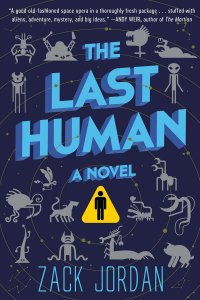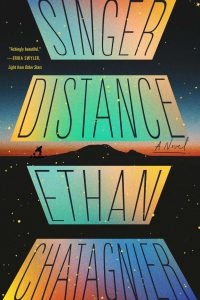Paul Di Filippo reviews Christopher Fowler
Given humanity’s long reliance on some kind of artificial structure to shelter us from the elements and predators and enemies, it is not surprising that houses and other buildings figure greatly in our legends, myths, dreams and fictions. Home is where the heart is, after all, as the cliché faithfully reports. The great site TV Tropes has an entire page of entries on various sorts of constructions that have been employed in storytelling as plot devices, motifs, macguffins or symbols. (I particularly like their nomenclature for the familiar Mordoresque spire: “Evil Tower of Ominousness.”) Constructing a tale around a haunted house or other spooky structure is almost a default mode for fantastika.
In his new book, Nyctophobia, Christopher Fowler has managed to come up with some very neat twists and frissons on this archetypical theme. The novel provides lots of quiet discomfort without gratuitous splatter or nastiness, and that’s rare in today’s marketplace. I might also mention at this juncture that Fowler has done two previous books recently in the horror vein for Solaris, an excellent publisher whose titles fly too much under the radar, I think. Those earlier titles are Hell Train and Plastic, and I intend to look them up, now that I’ve enjoyed Nyctophobia.
One might expect a novel concerned with “fear of darkness” to take place in some twilit, northern, Germanic clime, a place where daylight hours are short and fleeting. But right away we sense Fowler’s inclination to mess with our expectations in his choice of settings: sunny Spain. (Graham Joyce did something similar with his House of Lost Dreams, which took place in sun-drenched Greece.) We encounter our narrator/heroine Callie as she is house-hunting in that Mediterranean nation, having relocated there after her recent marriage to Mateo, a native. A real estate agent brings Callie to abandoned Hyperion House, she falls in love with the place, and the deal is sealed.
With that setup quickly out of the way, Fowler begins a dual-track campaign. First, he is going to give us Callie’s backstory (rather tragic) and a portrait of her unexpectedly happy marriage to dream guy Mateo (she even quickly and easily becomes a companion and guardian to Bobbie, Mateo’s charming nine-year-old daughter). Rendering these personalities and their relationships into something visceral and solid is ultimately necessary to explain the weirdness to come. But unlike many horror tales, no bottled-up marital psycho-sexual angst propels the plot. Instead, the triggers will prove to be a queer mix of solipsism, many-worlds theory, doppelgangers, ghosts, and Aleister-Crowley-style occultism. It’s a potent blend, the exact lineaments of which you will not guess.
Second, Fowler is going to make the curious history and architecture of Hyperion House tangible and fraught with arcane melodrama. Soon the place will be as real to the reader as their own home. We learn—gradually, in bits and pieces, as Callie does her clever and meticulous research—that Hyperion House was the sole accomplishment of an eccentric architect, originally meant as a celestial observatory (it seems at first, though the truth proves stranger). And the structure’s blind and sequestered rear half, almost butted up against a cliff face, gives it a chthonic aspect that counterbalances its outward focus on the heavens. Half perpetually sunny, half perpetually dark, the house, belonging to a single family for a century, is an objective correlative to many uncanny desires and events. For Callie, it soon begins to mirror both her worst fears and her highest hopes.
Fowler builds up the two intertwined and codependent halves of his story—house’s purpose and the lives of its inhabitants—in beautifully balanced counterpoise. There are also many moments of calm and peace (the portrait of the nearby Spanish town and its citizens is of engaging and whimsical travel memoir quality) to contrast with the equal number of grotesque incidents, such as when a man appears to be stung to death by hornets, or when Callie finally meets the dwellers in the dark—described by Fowler with precise gory gusto.
In the end, two traits distinguish this book from lesser, more traditional works of horror. First is a quasi-science fictional ambiance. Callie acts as a scientist seeking to unravel a riddle which, albeit not “natural,” is still of nature. The house is not an organic thing, but a machine designed to produce certain effects. Callie becomes almost like an astronaut exploring a Big Dumb Object. Second is Callie’s attitude toward the specters. Yes, she’s frightened. But above that emotion is a sense of pity, a desire to help. In working towards the liberation of Hyperion House’s ghostly tenants, she is also engaged on her own inner voyage of discovery, confrontation and healing.
Fowler delivers a useful message couched in thriller guise: only by empathizing with demons can we conquer them and relieve both them and ourselves of our uncertainty and pain. The opposite of nyctophobia is photophilia: the love of light.









Really loved HELL TRAIN. And you’re right about Solaris. They’re publishing some really great books, several notches above Angry Robot and other like competitors.
Hi Paul –
In early drafts the house was more machine-like, and I wondered if anyone would pick up on this element. I tried to restore the motivations which are all too often missing in this kind of tale. You’ve understood exactly what I wanted to do, and I’m thrilled by your review.